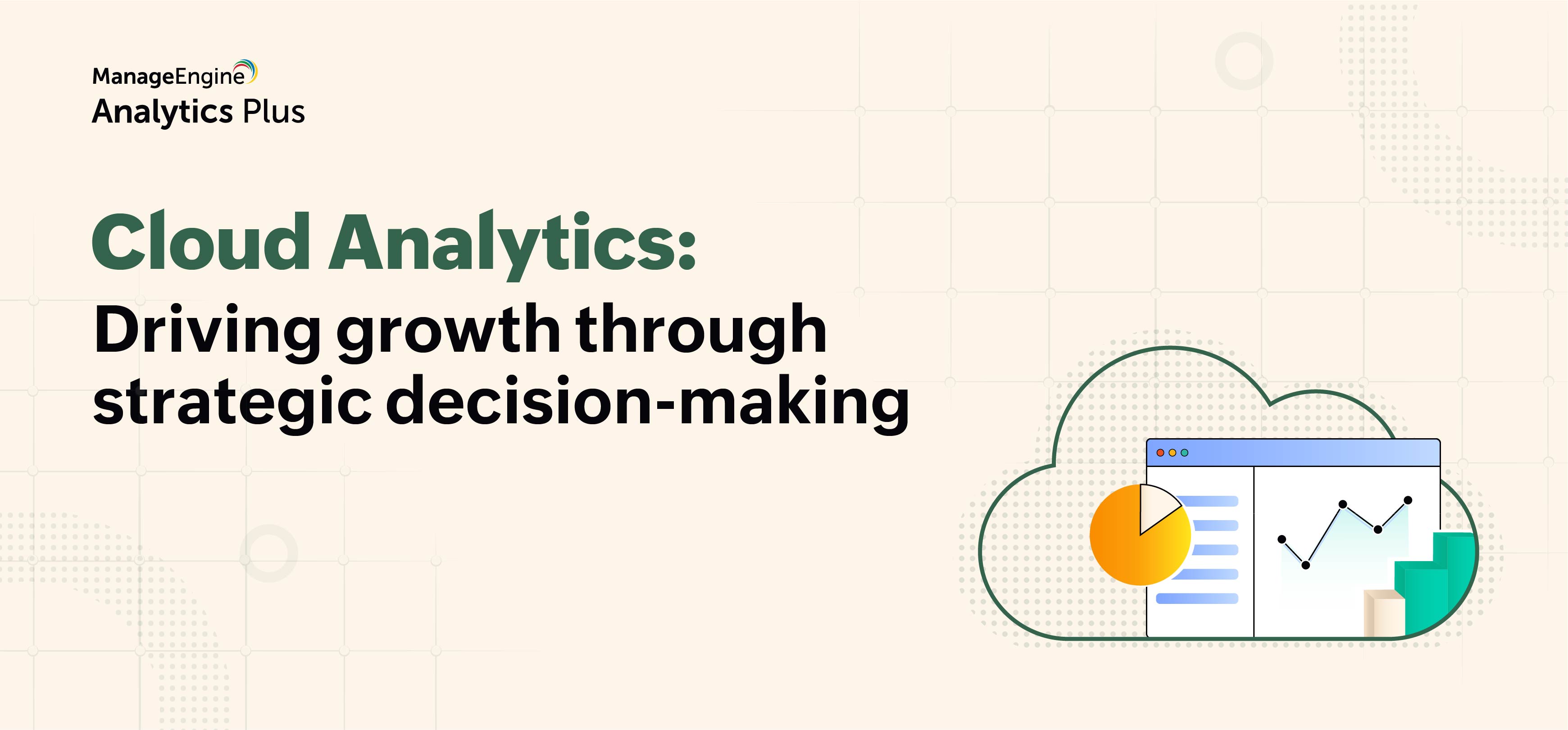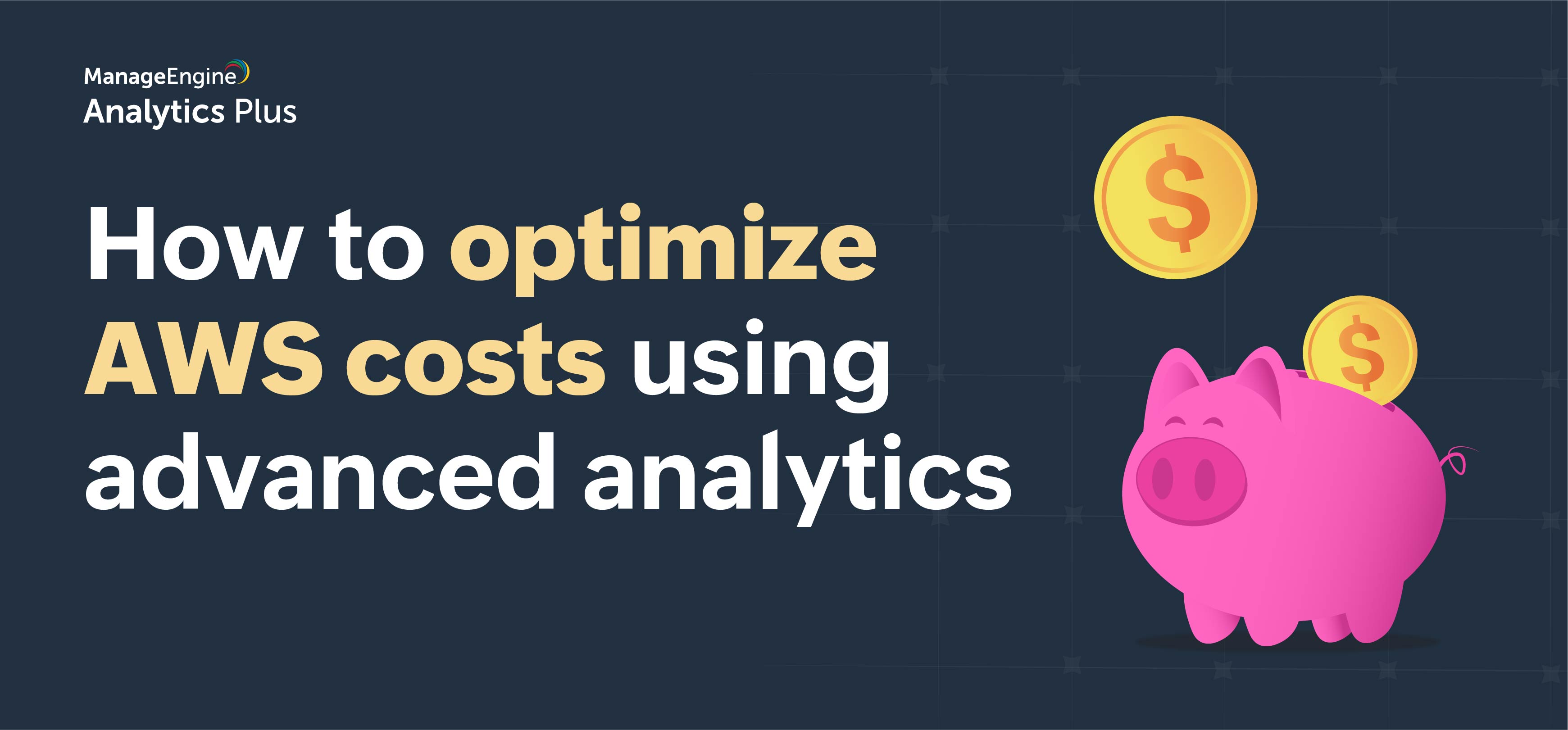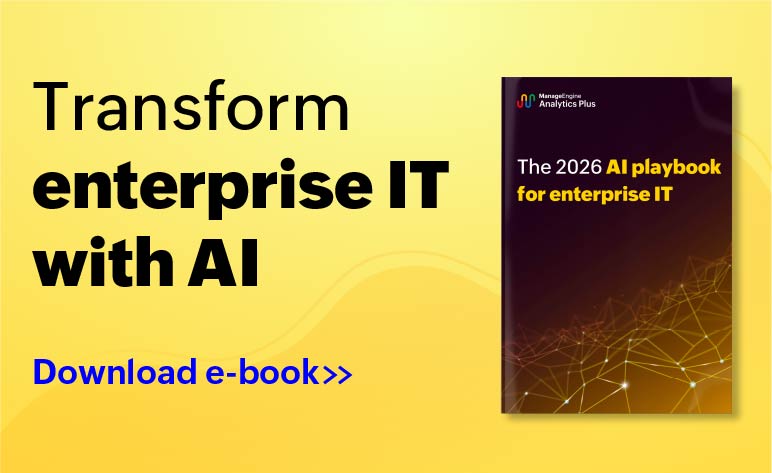- HOME
- ITSM Analytics
- Analytics and the cloud: Driving growth through strategic decision-making
Analytics and the cloud: Driving growth through strategic decision-making
- Last Updated: July 1, 2024
- 324 Views
- 5 Min Read

The move towards the cloud started in 2015, but it's only in the last two years that cloud adoption has become mainstream with the vast majority of enterprise workloads migrating to the cloud. The cloud offers plenty of benefits for storage and computing as opposed to traditional ways of computing, such as speed, agility, flexibility, cost savings, connectivity, collaboration, and most importantly, resilience.
This widespread cloud adoption spread across technologies, including advanced analytics. Moving analytics to the cloud offers immense benefits, including an enhanced customer experience, increased digital supply chain visibility and predictability, optimized network operations, and improved revenue forecasting.
Let's explore a few of the business benefits of moving analytics to the cloud.
1. Instant insight into big data
Organizations are collecting data at a massive scale and expect insights from it in record time. From a technical standpoint, these two don't often go hand in hand. The more data that is available, the longer it takes to clean, sort, and analyze it before any meaningful interpretation can happen.
On-premises data analytics systems may not be able to keep up with the high processing power required to process massive volumes of data; even if they do, it requires substantial capital investments. A cloud infrastructure, on the other hand, is flexible and scalable and can increase processing power on an on-demand basis in response to higher workloads. This means enormous savings for the organization, because it doesn't have to pay to own these additional resources.
2. Accessibility
Despite nearly two years of working in the hybrid mode, 80% of an organization's data is still siloed in on-premises, cloud, and multi-cloud systems that don't communicate well with one another, leaving organizations to apply analytics to partially-available data and make decisions based on those insights. In an age where the workforce is either remote or in hybrid mode, it can be detrimental when the analytics application is only accessible over the corporate network or some form of geo-restriction. C-suite audiences expect their insights to be available irrespective of where they are and in a form they are most comfortable with. This includes being available on both desktop and mobile browsers.
United Parcel Service (UPS), the biggest package shipping company in the world, successfully tackled its data problem and ended up saving 39 million gallons of fuel and cutting over 364 million miles from its routes. In 2012, UPS started using cloud analytics for its IoT data and uploaded its engine and vehicle performance data into the cloud. With more than 250 million data points, UPS built advanced route optimization models and saved on fuel costs.
3. Zero maintenance
When the world's largest carpooling company, BlaBlaCar, wanted to update its infrastructure to sustain growth, it didn't want to be tied to a single cloud or on-premises run server. Instead, it was one of the early adopters of containerization, later moving to the Kubernetes orchestration platform to support its fleet of applications. While it used to take BlaBlaCar days to get a new service started due to tremendous maintenance and upkeep efforts, post-cloud, they were able to start new services in mere minutes.
Enterprises have such diverse needs for hosting applications and workloads that fully on-premises or fully cloud solutions often don't work, owing mainly to the maintenance efforts required. Applications running on-premises require a lot of regular maintenance and break-fix to keep things in order. Also, the physical unavailability of employees in the office means on-premises infrastructure maintenance becomes a daily challenge.
In such cases, organizations resort to a best-of-breed approach to IT in which they sign up for top solutions from SaaS vendors. The underlying infrastructure supporting these applications are owned, maintained, and serviced by SaaS vendors, saving the organization labor while ensuring uptime, timely upgrades, and enhanced security. This enables the organization to redirect its manpower to other cross-functional business areas, such as problem solving, growth, and diversification.
4. Flexibility with cloud migration
The largest e-commerce platform, Amazon, moved its inventory management data to the cloud to keep up with growing business demands and to provide its customers with real-time information on product availability. Besides moving its data, Amazon also moved its analytics to the cloud, which enabled it to predict inventory requirement accurately and limit the time spent by products in standby.
The elastic capacity of businesses today, because of changing customer demands and constantly evolving technological requirements, necessitates an equally elastic infrastructure that expands to accommodate increasing workloads. These shifts call for an accessible-from-anywhere work model that requires applications and workloads to be available in the cloud. With nearly 60-70% of critical applications moving to the cloud, it's only natural that analytics applications also have a cloud presence.
Proximity and accessibility play a key role in delivering real-time analysis and insight. Data transfers between target applications and analytics is faster when both are on similar platforms as opposed to one being in the cloud and the other on-premises.
5. Disaster recovery and prevention against data loss
Disaster recovery plans typically involve setting up of a secondary data center to replicate the production environment and ensure data security. However, some delays in copying day-to-day workloads to the secondary data center is expected.
For an organization running its payloads on-premises, setting up a secondary data center for disaster recovery involves careful planning, meticulous execution, strict adherence to protocol, and a sizable chunk of its IT budget. Moving to SaaS applications eliminates the need to set up a secondary data center for disaster recovery and is easier on the IT budget. Plus, SaaS vendors take care of the security aspect of disaster recovery, leaving organization with one less thing to worry about.
SaaS vendors maintain several copies of customer data along with time-based snapshots. In the event of accidental deletion, a customer can go back to a previous version and configuration of its application to retrieve lost data. For analytics applications hosted in the cloud, no data is ever lost. This means an organization can continue where it left off and make headway on its goals and strategies for improvement and business growth.
6. Collaboration
Collaboration becomes simple, efficient, hassle-free, and it happens in real time with cloud-based analytics platforms. Whether due to day-to-day operations or for strategic decision-making, the time people across the organization wait endlessly to gather insights is significantly reduced by utilizing cloud analytics. The cloud enables people from different designations, departments, and geographies to access data central to their work effortlessly and collaborate to reach consensus on solutions to pressing problems
Conclusion
The cloud has always been at the forefront of innovation. Analytics and the cloud can play a critical role in optimizing IT operations, streamlining processes, building high-performance teams, and ensuring data security for the organization. Analytics in the cloud frees up resources to work on innovation rather than worrying about break-fixes and trying to keep services online.
Ultimately, analytics improves productivity and increases organizational growth. Besides the secure 24/7 availability of analytics, the cloud makes it possible to access data and hunt for solutions within data free of geographical and application-hosting-based restrictions. If you haven't tried analytics in the cloud, start now to see the benefits firsthand.
Note: This blog was originally authored by Rakesh Jayaprakash, Product Manager at ManageEngine and published in TBTech.






